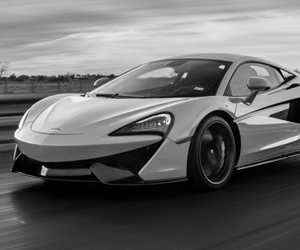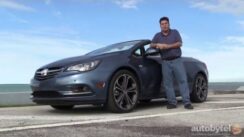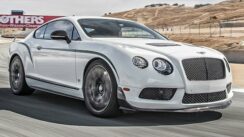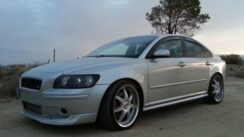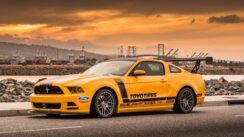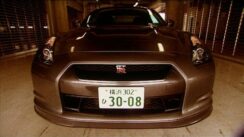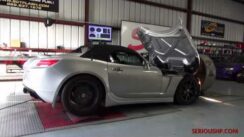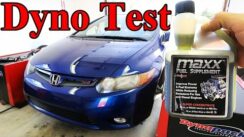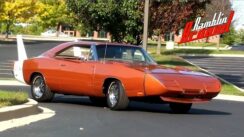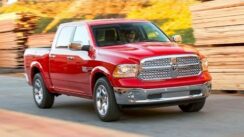How Much is Too Much Horsepower?

Proven fact: pretty much everyone thinks horsepower is great. If 300 hp is good, then 400 hp must be better, right? In our current era of horsepower wars, it seems like the cars get faster and more powerful year after year. But that brings up the question I’ve been seeing on forums lately: how much is too much horsepower?
First, we need to step back and look at where we’ve been. “The days of the 400 horsepower V8 from the dealership are gone forever.” That’s one of the first lines of Pat Ganahl’s book V-6 Performance, published June 1982. The dark ages were real, and recent.
Thirty years ago, the Dodge Viper didn’t exist, and the Chevy Corvette struggled to make 250 horsepower. If you wanted your sedan to have over 100 horsepower, that meant buying the V6. Zero to sixty times of 11 seconds were perfectly acceptable, and common. One of the quickest cars you could buy that year was a Ferrari Testarossa. That $94,000 bought you 375 horsepower from a flat 12.
Now, we live in the bright optimistic future of opposite land. It’s hard to find a car under 150 horsepower, and 200+ is easily found in four-bangers. V6s can make seriously impressive power, and V8s and above routinely develop racecar levels of power. Bugatti is releasing the 1,500 hp Chiron soon, an amount of power that was unthinkable a decade ago. The Detroit Three all have at least one car over 600 hp, and some even top 700, and all of them are well under $100,000.
So if we live in the land of plenty, why would some people say there is just too much horsepower out there? Well, “too much” can have a number of different meanings. The first one that comes to mind is a lack of traction. Too much power means the tires will break loose on hard acceleration. If you’re slipping, you aren’t going, and you aren’t winning.
However, this argument doesn’t always hold up. Let’s use the 2003 Pontiac GTO as an example. The 350hp LS1 was solid for the times, but the 3,800 lb Goat had traction issues putting that power to the ground. While fanboys said it made too much power to launch properly, that same LS1 engine had been used the year prior in the Trans Am with no traction issues. Also, a modern coupe of the same weight, the Nissan GTR NISMO, has 600 hp, and no traction issues. Power alone is not the problem, but how it is applied.
One of Jeremy Clarkson’s famous quotes is
“Speed has never killed anyone. Suddenly becoming stationary, that’s what gets you.”
Humor aside, the point is it’s not the power or speed, but driver mistakes, road problems, or an unsorted chassis that send them unexpectedly off-road and into a tree. This nanny mentality is the need to protect you from yourself, and is one of the reasons insurance companies killed the original muscle car era in the early ‘70s. The thought is that more power equals higher speed and/or quicker acceleration. They then surmise that accidents are more likely to happen, and are more likely to be serious, with that easy access to extra speed. This is why insurance rates are higher for a Hellcat than a H3.
While a 707 horsepower Dodge Challenger Hellcat is hard for anyone to ignore, it’s also true that a 55 horsepower Geo Metro can be involved in every bit the dangerous driving or fatal accident. Again, horsepower alone is not the culprit. A 1975 Porsche 911 Turbo had only 250 horsepower, but killed several drivers due to turbo lag and rear weight bias. The 1960 Chevy Corvair was the same story, but with a laughable 80 horsepower, and it became the symbol of dangerous cars. It wasn’t the power that killed them, but the unsafe car.
Last, the enthusiast driver can sometimes warn that too many modifications can make the car too powerful, and no longer fun to drive. I knew a guy with a Nova that was unable to get traction in first gear or reverse. Pulling on or off a shop lift was a nightmare. I’ve seen a Fox Mustang that could be cruising the highway at 70 mph, and flooring it would achieve a complete loss of traction and a smoke show. High power engines need more maintenance, due to solid lifters, or high boost pressures, and expensive parts break. When your favorite car rattles, or the exhaust is too loud, or it vibrates so much you don’t want to commute to work in it, then it’s no longer fun to drive.
Sure, it is possible to mod the fun out of your daily driver. I experienced something similar when putting solid engine and transmission mounts in my car. Wasn’t expecting THAT much vibration… Anyway, these mistakes happen while on the way to making a civil daily driver into basically a racecar with plates. But YouTube has the answer, as do national magazines like Muscle Mustangs & Fast Fords, and Super Street. These rags routinely feature cars with 1,000 hp at the wheels, all with immaculate build quality. Again, it’s not the horsepower, but the proper application of said power.
So, what does this mean for us? Is there no theoretical limit to horsepower in a streetcar? Instead of 30 years ago, think 20 years back. The McLaren F1 was the world’s most ridiculously fast car, but little did we know the Veyron was less than a decade away, and would exceed the F1’s power output by more than 50%. The technology to create the Veyron did not exist in 1996. The technology to create the Chiron did not exist in 2006. Today, we have Devel 16 show car. It’s a nightmare or engineering excess, with a 5,000 horsepower 12.3L V16. It’s currently vaporware, but it is coming. With the right technology, safety equipment, suspension design, and autonomous tech, it’s very likely that a 5,000 horsepower hypercar (ultracar?) will be built in our lifetimes.
“How much horsepower is too much?” is a question that answers itself. There’s really no such thing as too much horsepower, because it’s not about the horsepower. It never was.



































